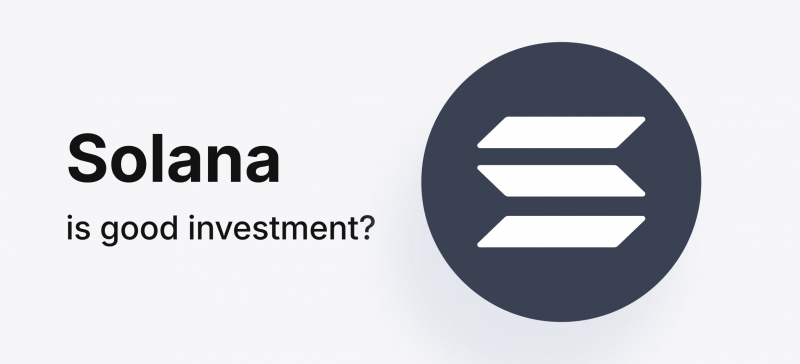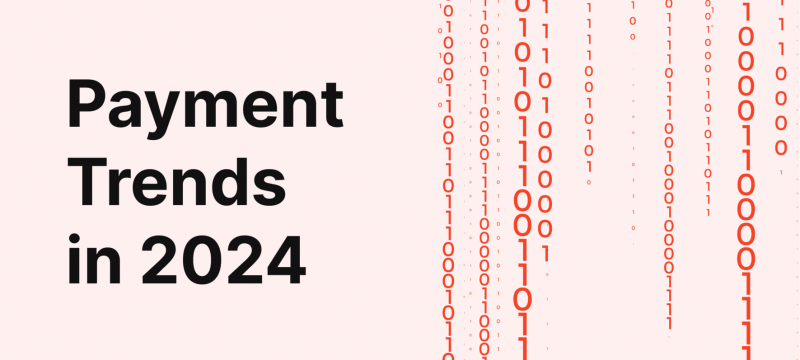One of the standout performers in the digital asset landscape over the past year has been Solana (SOL). This unique network has caught the attention of many, thanks to its impressive performance and remarkably low transaction fees.
In just one year, Solana’s price soared from $18 to $130 — a staggering increase of over 600%. This leap has made SOL the 5th largest cryptocurrency by market cap, positioning it as a heavyweight contender in the blockchain arena.
But the question remains — is Solana a good long-term investment?
Key Takeaways
- As the 5th largest cryptocurrency by market cap, Solana’s SOL has a solid standing in the crypto market.
- The Solana network is used for DeFi and NFTs, supporting creative projects like real-world asset tokenization and decentralized social media.
- Despite its success, Solana has challenges like network outages, concerns about centralization, and regulatory issues with the SEC.
What Is Solana?
Solana, a leading blockchain platform today, was created by Anatoly Yakovenko, along with a team of seasoned engineers. The project began in 2017, and after extensive development and testing, the mainnet was launched in March 2020.
Yakovenko, who had experience working at Qualcomm and Dropbox, brought a wealth of knowledge in distributed systems to the table. His vision was to create a blockchain that could handle thousands of transactions per second without compromising decentralization.
Solana’s Unique Selling Points
Let’s take a closer look at what makes Solana stand out from other chains:
Impressive Transaction Speed
Solana’s greatest strength is its Proof-of-History (PoH) consensus mechanism. Traditional blockchains rely on Proof-of-Work (PoW) or Proof-of-Stake (PoS) to validate transactions, which can be slow and resource-intensive. PoH, on the other hand, introduces a unique way to timestamp transactions before they are added to the blockchain.
In simpler terms, PoH creates a historical record that proves that an event has occurred at a specific moment in time. Doing so allows the network to process transactions much faster than other chains.
According to the developers, the PoH consensus helps Solana achieve impressive speeds of potentially 65,000 transactions per second (TPS). As a comparison, Ethereum was initially designed to hold only 15 TPS.
This efficiency comes from avoiding time synchronization problems found in other methods like PoW and PoS. PoH cuts down the computing power needed for validating transactions, leading to quicker processing and better scalability.
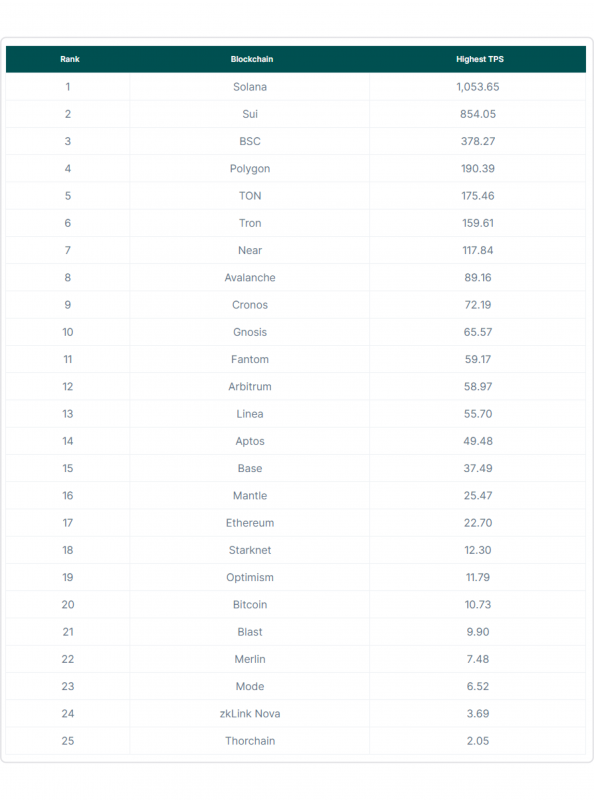
Solana has only reached 1.6% of its theoretical maximum speed of 65,000 TPS. On April 6, 2024, its actual daily average transactions per second peaked at a record high of 1,504.
Extremely Low Fees
Perhaps even more impressive is Solana’s cost-effectiveness. The network’s transaction costs are much lower compared to other blockchains, and in most cases, they are less than a cent per transaction. As of the time of writing, the average fee on Solana is about $0.002, which is 52400% cheaper than Ethereum’s average of $1.05.
This combination of speed and affordability makes Solana an attractive option for developers and users alike, particularly for applications requiring real-time processing and frequent operations.
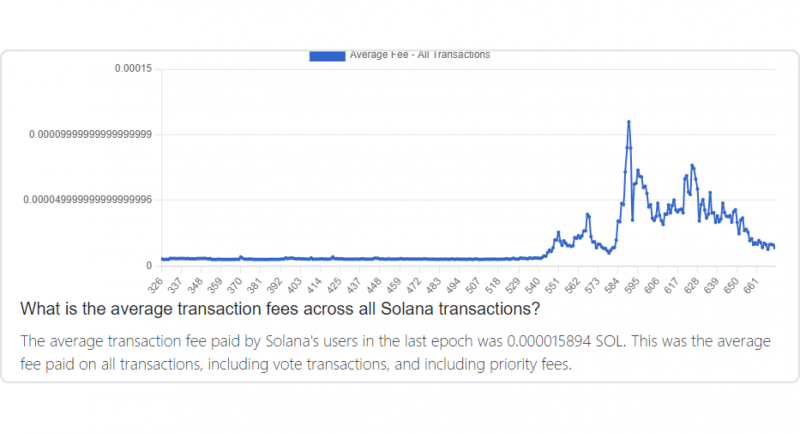
Developer-Friendly Environment
Like Ethereum, Solana supports smart contracts, but with a twist.
Solana’s approach to smart contracts is known as Solana programs. It supports contracts written in popular programming languages like Rust and C, making the network accessible to many developers.
Solana provides many resources to coders, including guides, tutorials, API references, and samples. This support, along with the platform’s scalability and low fees, attracts a growing user base. Currently, over 2,500 developers are actively contributing to open-source projects on Solana each month.
Solana’s Position in the Crypto Market
Solana’s market cap is on the rise, reflecting its increasing popularity and robust technological foundation. Currently, Solana (SOL) is the 5th largest cryptocurrency by market cap, a testament to investors’ confidence in its long-term potential.

Trading volume is a crucial indicator of a cryptocurrency’s liquidity and market interest. In the past 24 hours alone, Solana has witnessed a trading volume of $1.6 billion, making it the seventh most actively traded crypto asset.
- Volume (24h): $1,6 billion
- Market cap: $61,7 billion
As of September 16, 2024, Solana is trading at $131.5.
Institutional interest in Solana has also been growing steadily. According to the CoinShares’ April report, 15% of the surveyed institution investors are now buying Solana. A survey was conducted among 64 investors managing $600 billion in assets.
The rising interest in Solana is further evidenced by Solana-based stablecoins witnessing a total inflow of $1.5 billion in 6 months.
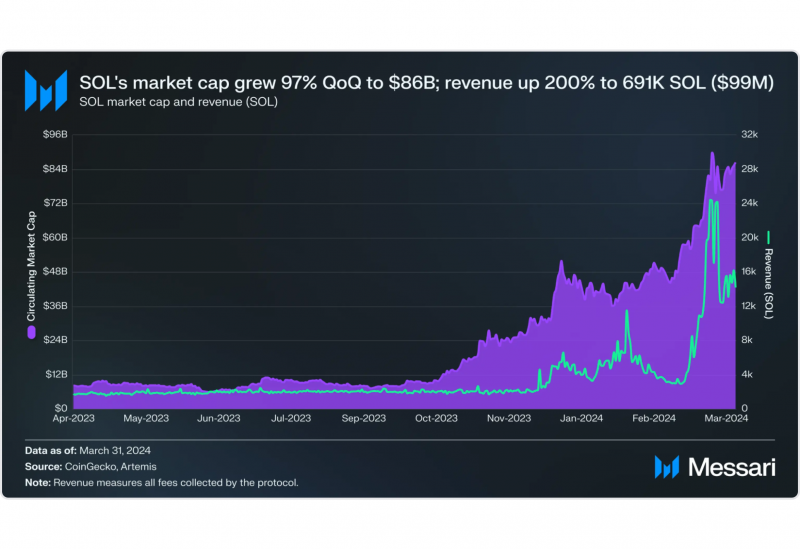
Solana’s Tokenomics
Solana’s tokenomics revolve around its native cryptocurrency, SOL.
Total Supply and Distribution
The total supply of SOL tokens is capped at 584,607,653, with approximately 468 million SOL currently in circulation. The initial distribution of these tokens was strategically allocated to ensure a balanced and equitable spread among various stakeholders.
According to data from Messari, 38.5% went to the community, 25.8% to team members and the Solana Foundation, and 35.7% to investors through seed and venture rounds.
Inflation Rate
Solana employs a disinflationary token emission schedule to manage its long-term supply. The initial inflation rate was set at 8% per year, with a gradual decrease of 15% annually until it reaches a long-term stable inflation rate of 1.5%.
This carefully planned approach keeps the token supply stable and sustainable, helping to prevent too much inflation from reducing the value of SOL over time.
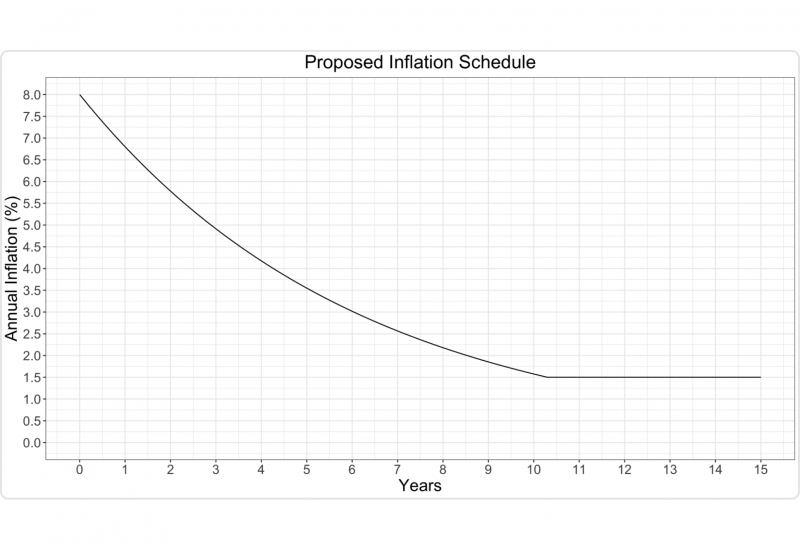
Token Utility
SOL tokens serve multiple purposes within the Solana ecosystem. They are used to pay transaction fees, participate in governance, and serve as collateral for DeFi applications.
Additionally, SOL holders can contribute to the network’s consensus by staking their tokens. This staking mechanism incentivizes network security and allows participants to earn rewards, further enhancing the token’s utility and value proposition within the Solana ecosystem.
The Rise of Solana in DeFi and NFTs
Solana’s high-performance blockchain is enabling a wide range of innovative use cases beyond traditional DeFi and NFTs. This has led to the development of unique projects in areas such as:
- Real-world asset tokenization
- Gaming and metaverse applications
- Decentralized social media platforms
- Cross-chain interoperability solutions
Unprecedented Activity Metrics
The robustness of Solana’s network can be gauged by its skyrocketing activity metrics.
According to the Messari’s 2024 Q1 report on Solana, the average daily fee payers surged by an impressive 214% quarter-on-quarter, reaching a peak of over 2 million on March 17. This upsurge was largely fueled by memecoin trading, reflecting the network’s burgeoning user base.
It is worth noting that Solana has recently recorded more than $83 million in decentralized trading volumes, a figure that surpasses Ethereum’s.
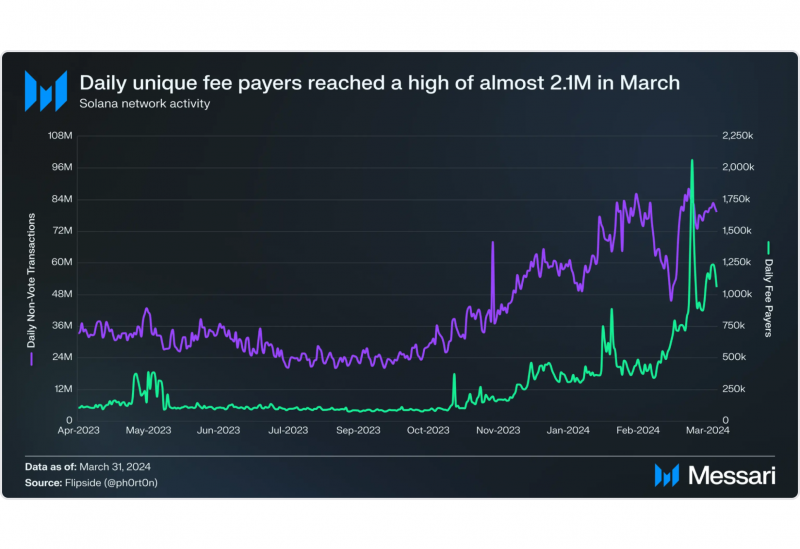
NFT Marketplace Growth
Solana blockchain is one of the top players in the NFT, with total sales volume reaching an impressive $5 billion in December 2023. In fact, today, Solana is the third largest network in terms of NFT activity.
The diversity of projects within Solana’s NFT space is also noteworthy. From digital art to virtual real estate, the platform supports a wide array of NFT categories, catering to various interests and niches.
Potential Risks and Challenges
While Solana’s rise in DeFi and NFTs is exciting, there are also potential risks and challenges that come with its rapid growth.
Network Outages
Solana has faced significant challenges with network stability. The platform experienced its eleventh outage in two years on February 6, 2024, lasting approximately 5 hours. This incident, along with previous outages, has raised concerns about the network’s reliability.
In September 2021, Solana suffered a 17-hour outage due to a denial of service attack during an IDO launch. These recurring issues may highlight the platform’s vulnerability to high transaction volumes and potential security threats.
Centralization Concerns
Despite Solana’s claims of decentralization, critics argue that the network is more centralized than it appears. The platform’s high transaction volume requires validators to use expensive, custom-built hardware, limiting participation.
Additionally, a significant portion of Solana’s validators are concentrated on a few cloud providers, with Hetzner hosting approximately 40% of validators and 20% of the stake. The initial token allocation also favored insiders, with 50% of tokens owned by VCs and insiders.
Competition from Ethereum
Ethereum remains a formidable competitor to Solana. With its transition to Ethereum 2.0 and the move to a Proof-of-Stake system, Ethereum aims to address its scalability and transaction speed limitations.
Ethereum’s mature ecosystem, extensive developer community, and established track record make it a trusted choice for many projects and investors. The approval of spot Ethereum ETFs (exchange-traded funds) could further strengthen its position in the market in the long run.
SEC Stance on Solana
The regulatory environment poses another challenge for Solana. The SEC’s approach to cryptocurrencies, including Solana, remains a concern for investors and developers.
The SEC has raised questions about whether Solana should be classified as a security. On August 25th, 2024, the SEC suspended its approval process for Solana spot ETFs.
Solana Price Predictions for 2024 and Beyond
As we explore the prospects of Solana, it’s essential to consider both the bullish and bearish viewpoints to gain a balanced understanding of the coin’s potential.
The Bullish and Bearish Perspectives
The bullish case for Solana rests on its ability to emulate the successful growth strategy of Ethereum, the leading blockchain smart contract platform. Solana’s focus on lowering barriers to entry and fostering a thriving community mirrors Ethereum’s formula for success, suggesting a promising future for the platform.
Furthermore, Solana’s dominance in the DeFi and NFT sectors, where it has outperformed Ethereum in trading volume and total value locked (TVL), underscores its potential to carve out a significant niche in the blockchain ecosystem.
However, the bearish perspective raises critical questions about the sustainability of Solana’s architectural choices and the platform’s capacity to navigate future challenges. The blockchain trilemma, where Solana has prioritized scalability over decentralization, could be a point of vulnerability as the market’s demands evolve.
Additionally, the emergence of Ethereum’s Layer-2 solutions and the platform’s successful transition to proof-of-stake may diminish the perceived necessity of Layer-1 solutions like Solana, potentially hindering its long-term dominance.
Forecasts and Predictions
Analysts anticipate Solana’s price to exceed its all-time highs in 2024, driven by strong momentum and solid fundamentals. WalletInvestor projects SOL to trade between $136 and $220 by the end of 2024, with an average price of $178.
For the Solana price prediction 2025, DigitalCoinPrice forecasts Solana to reach a high of $338 and a low of $282, with an average price of $304. In the long run, both DigitalCoinPrice and WalletInvestor predict Solana’s price to continue increasing, reaching $720 and $1,093 by 2030, respectively.
Community Feedback
According to the CoinMarketCap consensus rating of 8272 users, the current sentiment towards Solana is extremely bullish.
Solana has already demonstrated its capacity to attract a dedicated following, with its community-driven initiatives and the success of projects building on its blockchain. The platform’s focus on lowering barriers to entry and providing accessible tools for developers has been a key factor in its ability to onboard new participants and expand its ecosystem.
The Solana community remains optimistic about the platform’s future. Solana’s volumes in decentralized exchanges, NFT trading, and stablecoins have started to rival or overtake Ethereum’s. This growth, coupled with Solana’s high throughput and low transaction costs, positions it as a strong contender in the market.
Conclusion: Is Solana a Good Investment?
“Should I invest in Solana?” While the platform has shown promising growth and potential in areas such as DeFi and NFTs, it also faces significant challenges with network stability and centralization concerns.
Additionally, competition from Ethereum and regulatory uncertainties may pose obstacles to Solana’s future growth. However, analysts and the Solana community remain optimistic about its prospects, making it a possible option for those interested in investing in the cryptocurrency market.
Ultimately, individuals should carefully consider their own risk tolerance and conduct thorough research before making any investment decisions regarding Solana or any other cryptocurrency. Only time will tell how the platform will continue to evolve and perform in the market, but for now, Solana remains a promising player in the cryptocurrency world.
Disclaimer: This article is not financial advice and should not be taken as such. It is important to conduct your own research and consult with a financial advisor before making any investment decisions.
FAQ
Is it too late to invest in Solana?
It’s difficult to predict the exact timing of market movements. Solana’s current prices may be high, but if the platform continues to grow and attract investors, it could still be a good long-term investment opportunity.
How to invest in Solana?
You can invest in Solana by purchasing SOL tokens through a cryptocurrency exchange. Some popular exchanges that list SOL include Binance, Coinbase, and Kraken. Additionally, you can also participate in DeFi protocols built on the Solana blockchain to earn passive income or provide liquidity for trading pairs.
Is it possible for Solana to reach 1000 dollars?
While it is impossible to predict the exact price of any coin in the future, some analysts and experts believe that Solana has the potential to reach $1,000 or even higher in the long run. However, this will depend on various factors such as market conditions, adoption rate, and competition from other chains.
